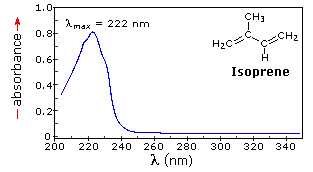It looks like you're using an Ad Blocker.
Please white-list or disable AboveTopSecret.com in your ad-blocking tool.
Thank you.
Some features of ATS will be disabled while you continue to use an ad-blocker.
share:
Saw this question posed on another forum and thought it would also bring some healthy debate here as well.
-Nexusnews
We can see an apple because it reflects red light. A frequency of light we can see. Why is there no object on earth that only reflects a light frequency that we cannot see. Like UV. Let us say that there is an object that only reflects UV or IR frequencies. These objects are real physical objects but cannot be seen by the human eye. Since the earth is supposed to be random, these object should actually exist. Why don't they?
-Nexusnews
reply to post by Nexusnews
They do, flowers use those frequencies to aid in attracting bees. Obviously the Bees sight range is much higher due to being not considered a "conventional" mammal eye, and the plants learned how to look pretty in those ranges too
www.bbc.co.uk...
They do, flowers use those frequencies to aid in attracting bees. Obviously the Bees sight range is much higher due to being not considered a "conventional" mammal eye, and the plants learned how to look pretty in those ranges too
www.bbc.co.uk...
edit on 22-2-2014 by Biigs because: epic spelling mistake
reply to post by Biigs
I think that Nexusnews is talking about an object that's completely only visible in another spectrum.
I think that Nexusnews is talking about an object that's completely only visible in another spectrum.
edit on bSat, 22 Feb 2014 16:21:13 -0600pm52America/Chicago2pmSaturday22America/Chicago by brazenalderpadrescorpio because: (no reason
given)
Things not only absorb light they also scatter it, you don't see gasses of the atmosphere because they don't absorb vis but you see the blue hue they
produce due to Rayleigh scattering.
Also Refraction
edit on 22-2-2014 by Indigent because: Misspelled the dudes name
Also Refraction
edit on 22-2-2014 by Indigent because: (no reason given)
reply to post by Biigs
Well there was another good question posed as well seeking a response which I think directly correlates to the question.
Well there was another good question posed as well seeking a response which I think directly correlates to the question.
How would we know if we see all matter? I'm seriously asking, there are theoretical particles we can't see, I'm not convinced we understand time, and I suspect other dimensions overlap ours at different speeds.
edit on 22-2-2014 by Nexusnews because: (no reason given)
brazenalderpadrescorpio
reply to post by Biigs
I think that Nexusnews is talking about an object that's completely only visible in another spectrum.
edit on bSat, 22 Feb 2014 16:21:13 -0600pm52America/Chicago2pmSaturday22America/Chicago by brazenalderpadrescorpio because: (no reason given)
Exactly.
reply to post by Nexusnews
Is it actually possible for us to build something which our eyes cannot see?
Is it actually possible for us to build something which our eyes cannot see?
reply to post by Nexusnews
I think there's been some attempts in the animal kingdom, like this glass squid;

Most animals, however, find it easier to mimic the common background of their habitats, like white in winter, as a blending strategy.
I think a better question would be as to whether there's any artificial substance that could be manufactured that is opaque only to "invisible" frequencies, or, even better, a substance that can be manufactured that's entirely transparent to everything.
I think there's been some attempts in the animal kingdom, like this glass squid;

Most animals, however, find it easier to mimic the common background of their habitats, like white in winter, as a blending strategy.
I think a better question would be as to whether there's any artificial substance that could be manufactured that is opaque only to "invisible" frequencies, or, even better, a substance that can be manufactured that's entirely transparent to everything.
zilebeliveunknown
reply to post by Nexusnews
Is it actually possible for us to build something which our eyes cannot see?
Yes look at all the telescopes and all the images we get from Hubble. That is pictures overlapped of different wavelengths. Also we have thermal imaging.
-Nexusnews
So far, the spirit world is invisible to every form of detection man has developed.
Unless of course they want you to see them.
regards,
intrptr
Unless of course they want you to see them.
regards,
intrptr
If a subject does not reflect a certain spectrum of light, it absorbs it doesn't it? So, if it absorbs all the "visible light" spectrum (visible by
humans) and only reflects those frequencies that the human eye cannot see, then wouldn't that subject appear black (absorbing the entire "visible
light" spectrum) to a human? Also, it would still block that light, and cast a shadow, would it not?
Trust me there are many things that don't absorb visible like most polymers, pretty much all that is opaque and don't have colors. You can see it
because they scatter light. All polymers absorb uv due to c-c bonds but they need special chromophore groups to absorb visible
For uv spectroscopy quartz is used as it does not absorb in any of the uv-vis spectra and quartz is natural
For uv spectroscopy quartz is used as it does not absorb in any of the uv-vis spectra and quartz is natural
edit on 22-2-2014 by Indigent
because: (no reason given)
reply to post by Nexusnews
Do you see oxygen, nitrogen, CO2, hydrogen or helium, amongst other gases? most molecules are made up of a variety of atoms, which radiate at different frequencies. We see those frequencies we can see, and don't see the ones we can't. And apparently there is no matter made up solely of stuff that doesn't radiate light in are vision spectrum, otherwise there would be be splotches of black every so often that we would bump into.
Next.
Do you see oxygen, nitrogen, CO2, hydrogen or helium, amongst other gases? most molecules are made up of a variety of atoms, which radiate at different frequencies. We see those frequencies we can see, and don't see the ones we can't. And apparently there is no matter made up solely of stuff that doesn't radiate light in are vision spectrum, otherwise there would be be splotches of black every so often that we would bump into.
Next.
I think that the entire model for physics is flawed somehow... Does physics have a lot of matter in their theory? Or do they just call everything
they do not understand "Dark Matter"?
reply to post by Nexusnews
I gave you your answer, there are many things that don't absorb vis in the nature, we see them due to scattering and reflection of light
example:

I gave you your answer, there are many things that don't absorb vis in the nature, we see them due to scattering and reflection of light
example:

edit on 22-2-2014 by Indigent because: (no reason given)
reply to post by Indigent
Think you are missing the point.
So what matter exists in the microwave range?
Why wouldn't we bump into this matter? Does this matter exist in our world or is it in another dimension?
-Nexusnews
Think you are missing the point.
So what matter exists in the microwave range?
Why wouldn't we bump into this matter? Does this matter exist in our world or is it in another dimension?
-Nexusnews
edit on 22-2-2014 by Nexusnews because: (no reason given)
edit on 22-2-2014 by Nexusnews because: (no reason
given)
reply to post by Nexusnews
Maybe they do exist but we are looking for them incorrectly. Perhaps we are looking and trying to see them from the wrong two eyes.
Maybe they do exist but we are looking for them incorrectly. Perhaps we are looking and trying to see them from the wrong two eyes.
reply to post by Nexusnews
Dude you are mistaken, matter is much smaller than light wavelength, and by the way you are going the wrong way the smallest wavelength is gamma rays. here you go
Electromagnetic spectrum
Dude you are mistaken, matter is much smaller than light wavelength, and by the way you are going the wrong way the smallest wavelength is gamma rays. here you go
Electromagnetic spectrum
leolady
reply to post by Nexusnews
Maybe they do exist but we are looking for them incorrectly. Perhaps we are looking and trying to see them from the wrong two eyes.
"We know it exists, it's just we can't see it!"
I heard this phrase number of times coming from scientists when they're speaking about dark matter.
Simple logic would be that there is whole another world governed with different laws of physics.
new topics
-
Supreme Court Oral Arguments 4.25.2024 - Are PRESIDENTS IMMUNE From Later Being Prosecuted.
Above Politics: 34 minutes ago -
Krystalnacht on today's most elite Universities?
Social Issues and Civil Unrest: 43 minutes ago -
Chris Christie Wishes Death Upon Trump and Ramaswamy
Politicians & People: 1 hours ago -
University of Texas Instantly Shuts Down Anti Israel Protests
Education and Media: 3 hours ago -
Any one suspicious of fever promotions events, major investor Goldman Sachs card only.
The Gray Area: 5 hours ago -
God's Righteousness is Greater than Our Wrath
Religion, Faith, And Theology: 9 hours ago
top topics
-
VP's Secret Service agent brawls with other agents at Andrews
Mainstream News: 14 hours ago, 11 flags -
Nearly 70% Of Americans Want Talks To End War In Ukraine
Political Issues: 15 hours ago, 5 flags -
Sunak spinning the sickness figures
Other Current Events: 15 hours ago, 5 flags -
Electrical tricks for saving money
Education and Media: 13 hours ago, 4 flags -
Late Night with the Devil - a really good unusual modern horror film.
Movies: 17 hours ago, 3 flags -
Krystalnacht on today's most elite Universities?
Social Issues and Civil Unrest: 43 minutes ago, 3 flags -
University of Texas Instantly Shuts Down Anti Israel Protests
Education and Media: 3 hours ago, 2 flags -
Any one suspicious of fever promotions events, major investor Goldman Sachs card only.
The Gray Area: 5 hours ago, 2 flags -
Supreme Court Oral Arguments 4.25.2024 - Are PRESIDENTS IMMUNE From Later Being Prosecuted.
Above Politics: 34 minutes ago, 2 flags -
Chris Christie Wishes Death Upon Trump and Ramaswamy
Politicians & People: 1 hours ago, 0 flags
active topics
-
University of Texas Instantly Shuts Down Anti Israel Protests
Education and Media • 55 • : CriticalStinker -
The Reality of the Laser
Military Projects • 48 • : 5thHead -
Nearly 70% Of Americans Want Talks To End War In Ukraine
Political Issues • 69 • : SchrodingersRat -
Supreme Court Oral Arguments 4.25.2024 - Are PRESIDENTS IMMUNE From Later Being Prosecuted.
Above Politics • 1 • : network dude -
Candidate TRUMP Now Has Crazy Judge JUAN MERCHAN After Him - The Stormy Daniels Hush-Money Case.
Political Conspiracies • 744 • : Threadbarer -
Truth Social goes public, be careful not to lose your money
Mainstream News • 129 • : matafuchs -
Krystalnacht on today's most elite Universities?
Social Issues and Civil Unrest • 2 • : marg6043 -
Remember These Attacks When President Trump 2.0 Retribution-Justice Commences.
2024 Elections • 56 • : WeMustCare -
British TV Presenter Refuses To Use Guest's Preferred Pronouns
Education and Media • 148 • : Consvoli -
VP's Secret Service agent brawls with other agents at Andrews
Mainstream News • 44 • : ByeByeAmericanPie
